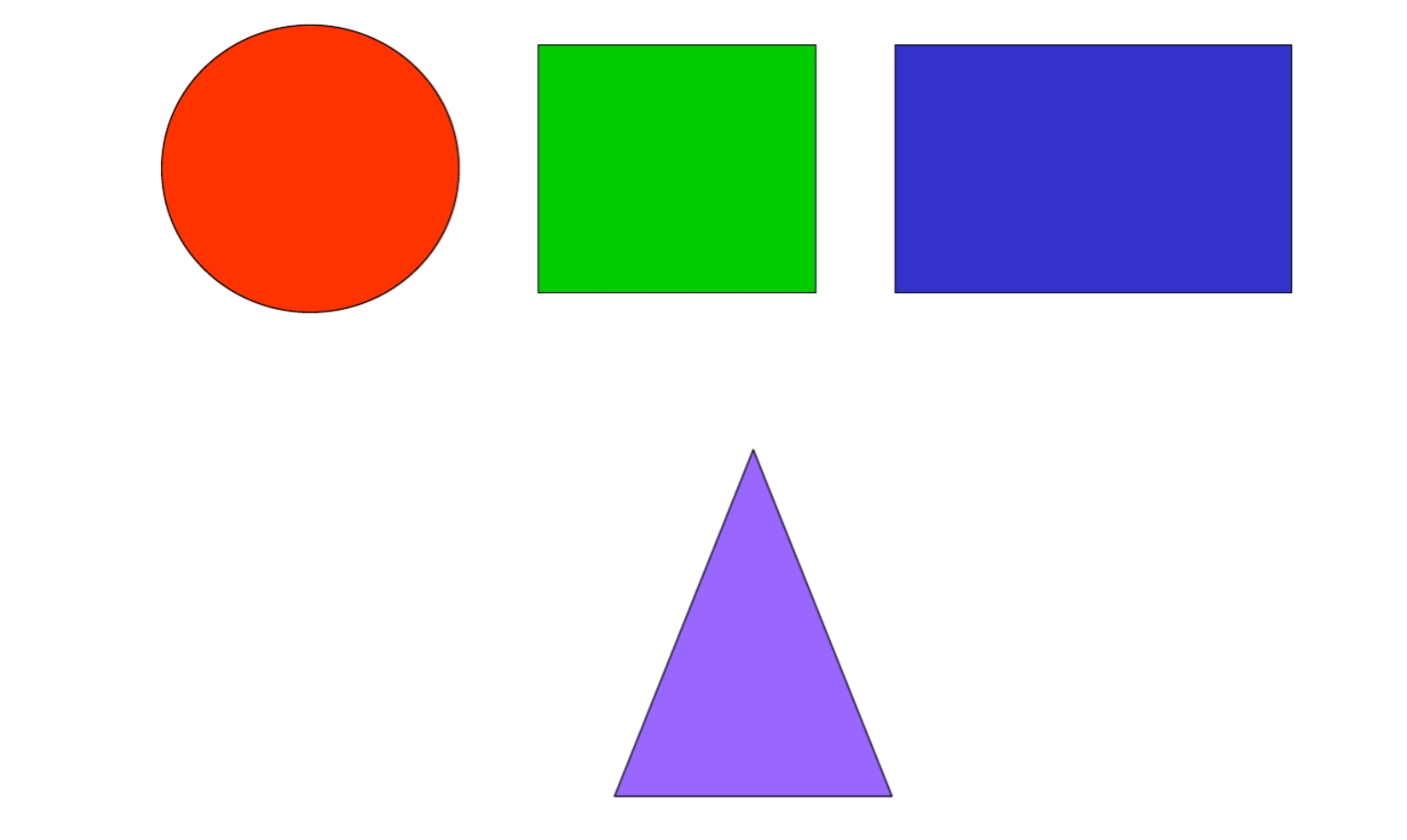Shapes
- What are Shapes?
- Different Types of Shapes
- Solved Examples on Shapes
- Practice Problems On Shapes
What are Shapes?
Shapes are geometric figures that can be described by their boundaries or outlines. They are the basic building blocks of geometry and have been studied and classified for centuries. Shapes can be found in nature, art, architecture, and many other areas of human interest.

Different Types of Shapes
There are numerous types of shapes, each with its own unique characteristics and properties. Some common types of shapes include:
Point: A point is the most basic shape and has no length, width, or height. It is represented by a dot.
Line: A line is a straight path with infinite length but no width or depth. It is characterized by having two endpoints.
Ray: A ray is a line that has one endpoint and extends infinitely in one direction.
Line Segment: A line segment is a portion of a line with a defined start and end point. It has a specific length.
Angle: An angle is formed by two rays that share a common endpoint called the vertex. It is measured in degrees.
Triangle: A triangle is a polygon with three sides and three angles. The sum of the angles in a triangle is always 180 degrees.
Quadrilateral: A quadrilateral is a polygon with four sides and four angles. Examples include squares, rectangles, parallelograms, and trapezoids.
Circle: A circle is a shape that is formed by all the points in a plane that are equidistant from a fixed point called the center. It is defined by its radius and diameter.
Oval: An oval is a shape that resembles a stretched circle. It has a curved outline and is asymmetrical.
Polygon: A polygon is a closed shape with straight sides. Examples include triangles, quadrilaterals, pentagons, hexagons, and octagons.
Polyhedron: A polyhedron is a three-dimensional shape with flat faces, straight edges, and sharp corners. Examples include cubes, pyramids, prisms, and dodecahedrons.
Cylinder: A cylinder is a three-dimensional shape with two parallel circular bases that are connected by a curved surface. It resembles a can or a soda bottle.
Cone: A cone is a three-dimensional shape with a circular base and a pointed top called the apex. It resembles an ice cream cone.
Sphere: A sphere is a three-dimensional shape that is perfectly round and has no flat surfaces. It is defined by its radius.
Cube: A cube is a three-dimensional shape with six square faces, twelve edges, and eight vertices. It is a regular polyhedron.
These are just a few examples of the many shapes that exist. Each shape has its own unique properties, such as the number of sides, angles, and dimensions. By studying shapes, mathematicians are able to explore concepts such as symmetry, area, perimeter, volume, and more.
Now, let's take a look at some solved examples on shapes to better understand their properties and how they can be applied in real-world scenarios.
Solved Examples on Shapes:
Example 1: Find the perimeter of a rectangle with a length of 6 units and a width of 4 units.
Solution: The perimeter of a rectangle is given by the formula P = 2L + 2W, where L is the length and W is the width. Substituting the given values, we have P = 2(6) + 2(4) = 12 + 8 = 20 units. Therefore, the perimeter of the rectangle is 20 units.
Example 2: Calculate the area of a circle with a radius of 5 centimeters.
Solution: The area of a circle is given by the formula A = πr^2, where r is the radius. Substituting the given value, we have A = π(5^2) = π(25) = 78.54 square centimeters. Therefore, the area of the circle is approximately 78.54 square centimeters.
Example 3: Determine the volume of a cube with an edge length of 3 meters.
Solution: The volume of a cube is given by the formula V = s^3, where s is the length of one side. Substituting the given value, we have V = 3^3 = 27 cubic meters. Therefore, the volume of the cube is 27 cubic meters.
Practice Problems on Shapes:
Now, let's practice solving some problems on shapes to reinforce our understanding.
Problem 1: Find the area of a triangle with a base of 8 inches and a height of 6 inches.
Problem 2: Calculate the perimeter of a square with a side length of 10 centimeters.
Problem 3: Determine the surface area of a cylinder with a radius of 4 meters and a height of 6 meters.
Problem 4: Find the volume of a sphere with a radius of 7 centimeters.
Problem 5: Calculate the area of a parallelogram with a base of 12 units and a height of 5 units.
These practice problems will help us apply the formulas and concepts we have learned about shapes and further develop our problem-solving skills.
In conclusion, shapes are fundamental geometric figures that can be found in various aspects of our daily lives. They are classified into different types based on their characteristics and properties. By studying shapes, we can understand and analyze their dimensions, angles, areas, perimeters, volumes, and more. Solving examples and practice problems on shapes allows us to apply these concepts in real-world scenarios and strengthen our understanding of geometry.